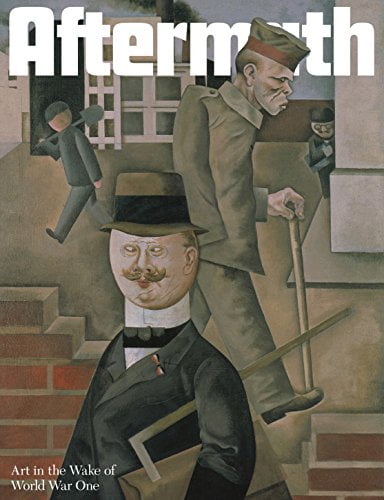Aftermath: Art in the Wake of World War One
This accompanying publication examines how processes of commemoration and mourning were represented through the visual arts in Britain, Germany and France. Illustrations will range from artworks specifically commissioned as memorials of war – such as commemorative painting cycles and memorial sculpture – to those associated with formal and intellectual developments such as Dada and Surrealism, which created new visual forms to process experiences and memories of the conflict. Authors will also examine how memories of war influenced the art of the inter-war years and look at the social impact of the First World War through the interaction between artists, politics and city spaces.
Description
A ground-breaking exhibition at Tate Britain, scheduled to mark the end of the 1918 centenary commemorative period, will be the first to examine the memorialization and the social and aesthetic impact of the First World War. It will explore how memories of the war have been filtered through specific cultural forms and political agendas. These range from memorial painting and sculpture, to representations of the destruction of bodies and landscape, and new aesthetic developments in art which offered ways of critiquing and re-imagining post-war society. It will compare visual responses to the war in Britain, Germany and France and include painting, sculpture, works on paper, photography, film and medical collections. This accompanying publication will examine how processes of commemoration and mourning were represented through the visual arts in Britain, Germany and France. Illustrations will range from artworks specifically commissioned as memorials of war – such as commemorative painting cycles and memorial sculpture – to those associated with formal and intellectual developments such as Dada and Surrealism, which created new visual forms to process experiences and memories of the conflict. Authors will also examine how memories of war influenced the art of the inter-war years and look at the social impact of the First World War through the interaction between artists, politics and city spaces. Aftermath seeks to broaden the examination of war and memory beyond the modernist canon to show how both traditional and avant-garde art formed part of this process, exploring the parallel resurgence of realism in movements such as Neue Sachlichkeit and the `Return to Order’ which responded to the aftermath of war through the reinvention of traditional forms
Additional information
| Date Published | Jun 18 |
|---|---|
| Language | English |
| Publisher | |
| Specifications | 24.5 x 18.6 cm, Softback, 128pp |

